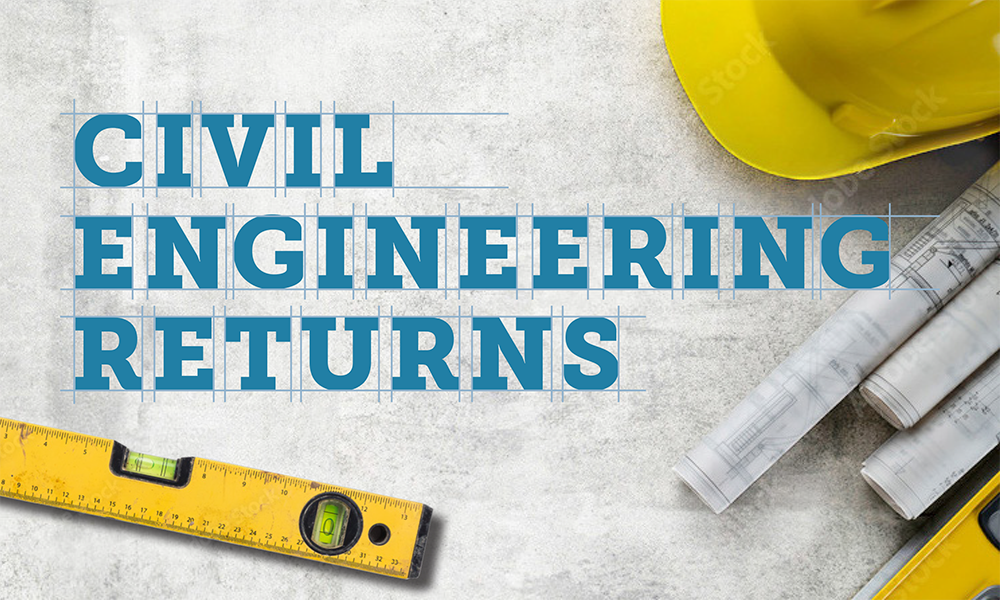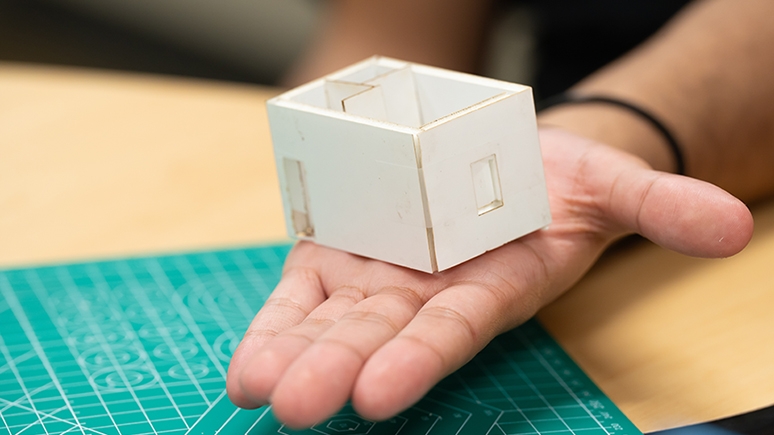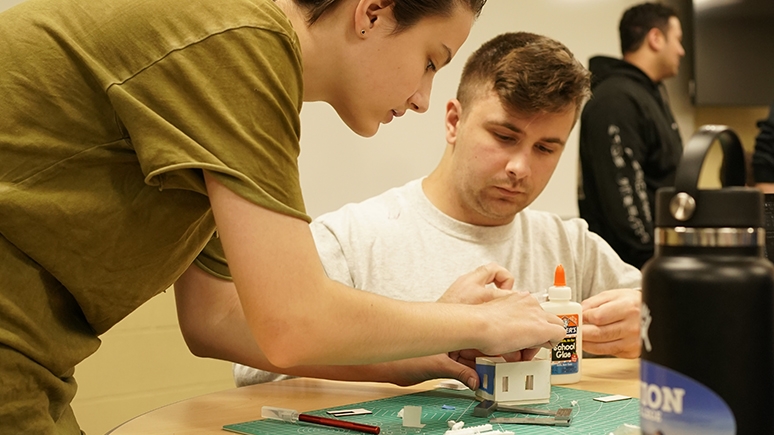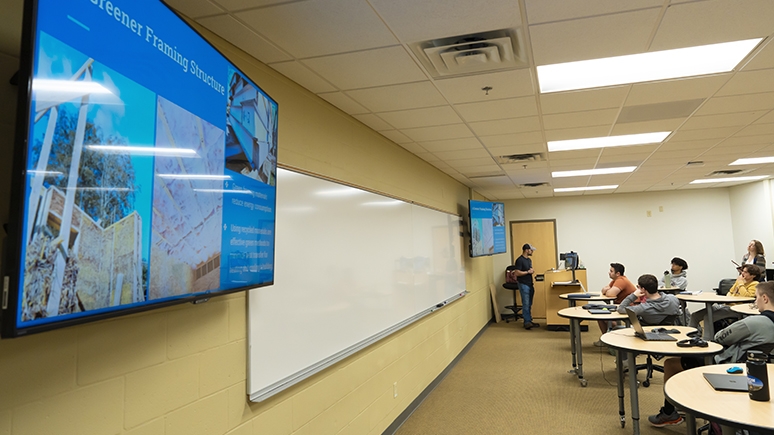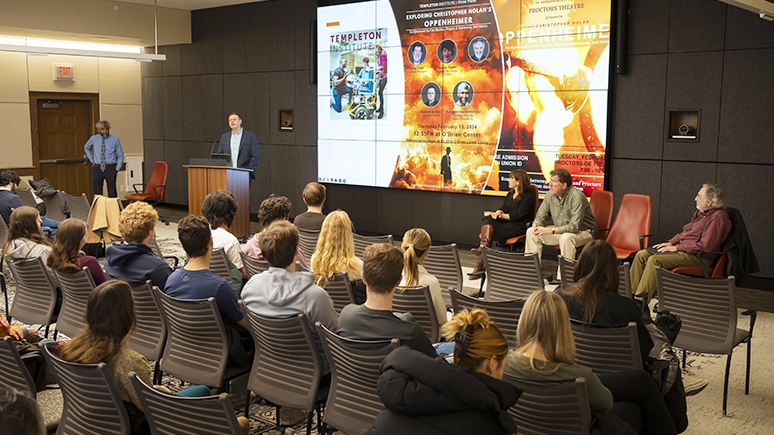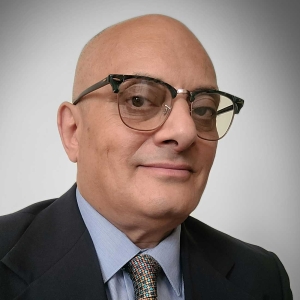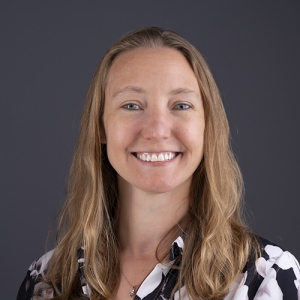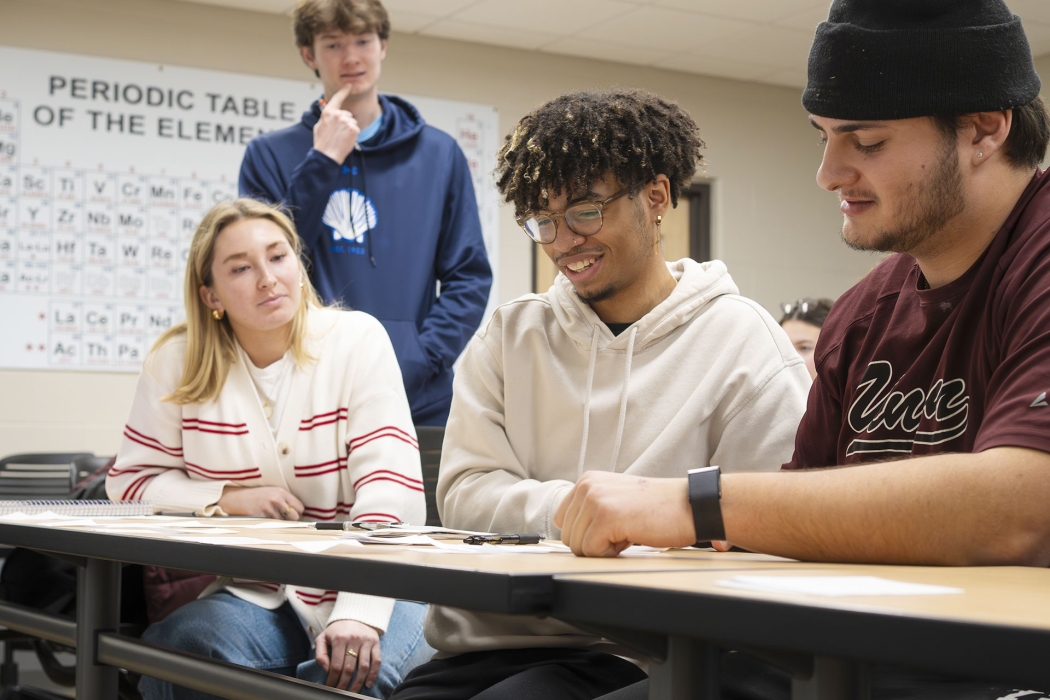
Samuel Flynn '26 (standing), Maddie Doyle '26, Elias Acevedo '27 and Reid Vanslette '26 participate in Union's first new civil and environmental engineering course in fall 2023.
“My feeling is one of unmatched joy.”
That’s how Ashraf Ghaly, the Carl B. Jensen Professor of Engineering, reacted to the return of civil engineering. Here to witness the major’s end in 2001, he’s exuberantly embracing its comeback.
And he’s not the only one.
“The response has been overwhelmingly positive. Every former student I have met since the College announced the return of the department [in May 2022] has given me a huge smile, a strong handshake and sometimes a warm hug,” Ghaly said. “We are also getting a lot of interest from current students.”
In May 2022, environmental engineering was added as well, creating the Department of Civil and Environmental Engineering (CEE). Carolyn Rodak, CEE chair, echoed Ghaly’s sentiments.
“Students have established the American Society of Civil Engineers club,” she said. “They are working to become a recognized student chapter of ASCE and are working through logistics to compete in steel bridge and concrete canoe competitions in the future.”
New civil and environmental engineering courses, which began in fall 2023, are also attracting students’ attention.
“Though the numbers are still in flux, our first required CEE course, Engineering Graphics (spring 2024), had 25 students who have declared as civil or environmental engineering majors—or who have indicated they are likely to declare in one of the two majors before the end of the year,” Rodak said. “This is a great turnout for our first year.”
Required courses are those students majoring in the subject must take. Next year, two more such classes will be added. Additional CEE courses open to any student will also be available soon.
Potter Lab, which was built in 1968 and has longstanding ties to civil engineering, is also being renovated into a space for hands-on laboratory activities. The space is currently subdivided and being used, in part, for storage.
“The work will essentially open the full space to be used as a lab for structural materials and mechanics of materials courses, in which students will do things like mix, pour and break concrete, as well as test the strength of other materials such as steel,” Rodak said. “It is also large enough to house a concrete canoe if our ASCE student club chooses to compete.”
Other department initiatives include building contacts in the community to develop collaborative projects and research opportunities for students and adding more CEE faculty, who will continue to enhance academic offerings with new courses and fieldwork experiences.
“The challenges facing us today touch on so many aspects of civil and environmental engineering—from climate change to food insecurity to infrastructure resilience,” Rodak said. “As we see rapid incorporation of new technologies such as artificial intelligence and changes in our environment due to climate change, our CEE degree is providing students with the skills they need to succeed through a holistic educational experience.”
The bigger engineering picture and a new $40 million gift
We live in a time of rapid technological advancement. To thrive, students need both technical competence and a breadth of knowledge that spans everything from sociology to history to digital art and design.
The Engineering & Computer Science Initiative (ECSI) exists to make sure students leave Union equipped with everything they’ll need. And a new $40 million gift from Mary ’80 and Rich Templeton ’80, announced in April, is helping take ECSI to the next level. (Read this story to learn more about this transformational gift.)
“We believe strongly in Union, which offers a distinctive combination of the liberal arts, engineering and computer science,” the couple said. “Our investment will help Union continue to create a first-class engineering and computer science capability, which, when combined with the liberal arts, uniquely prepares Union graduates to be successful in today’s world.”
The goals of the Engineering & Computer Science Initiative include:
- delivering new and innovative learning opportunities to engineering and computer science students within the context of a broad liberal arts education
- offering non-engineering and computer science students opportunities to become conversant with digital data and technology
- bringing both types of students together to lend multiple perspectives to today’s challenges
Here are some recent examples of how ESCI is meeting these goals:
- With the addition of civil and environmental engineering in 2022, students can now choose from seven engineering majors. A new minor in music technology focuses on the connections between music and engineering and computer science and digital arts.
- New faculty with diverse expertise in engineering and computer science are coming on board. Recent hires have included Stephanie Curley and Michael Okwori in the Electrical, Computer and Biomedical Engineering Department and Carolyn Rodak, inaugural chair of Civil and Environmental Engineering.
- The Templeton Institute brings together teachers, learners and practitioners from myriad fields to focus on academics as well as real-world challenges. It fosters interdisciplinary connectedness with new courses like “Introduction to Science, Technology and Society” (team-taught by liberal arts and engineering faculty) and through events like the recent “Oppenheimer” film viewing and panel discussion.
“Our ability to add majors like civil and environmental engineering, and minors like music technology, is an integral component of our work to capitalize on the fact that Union's offerings include the liberal arts and engineering,” said Michele Angrist, the Stephen J. and Diane K. Ciesinski Dean of the Faculty and vice president for Academic Affairs.
Similarly, our commitment to hiring new faculty with diverse expertise and growing the Templeton Institute means that a Union education now encompasses additional pathways—pathways through which students focused on liberal arts will have their horizons and competencies enhanced by exposure to faculty in engineering and computer science, and vice versa.”
